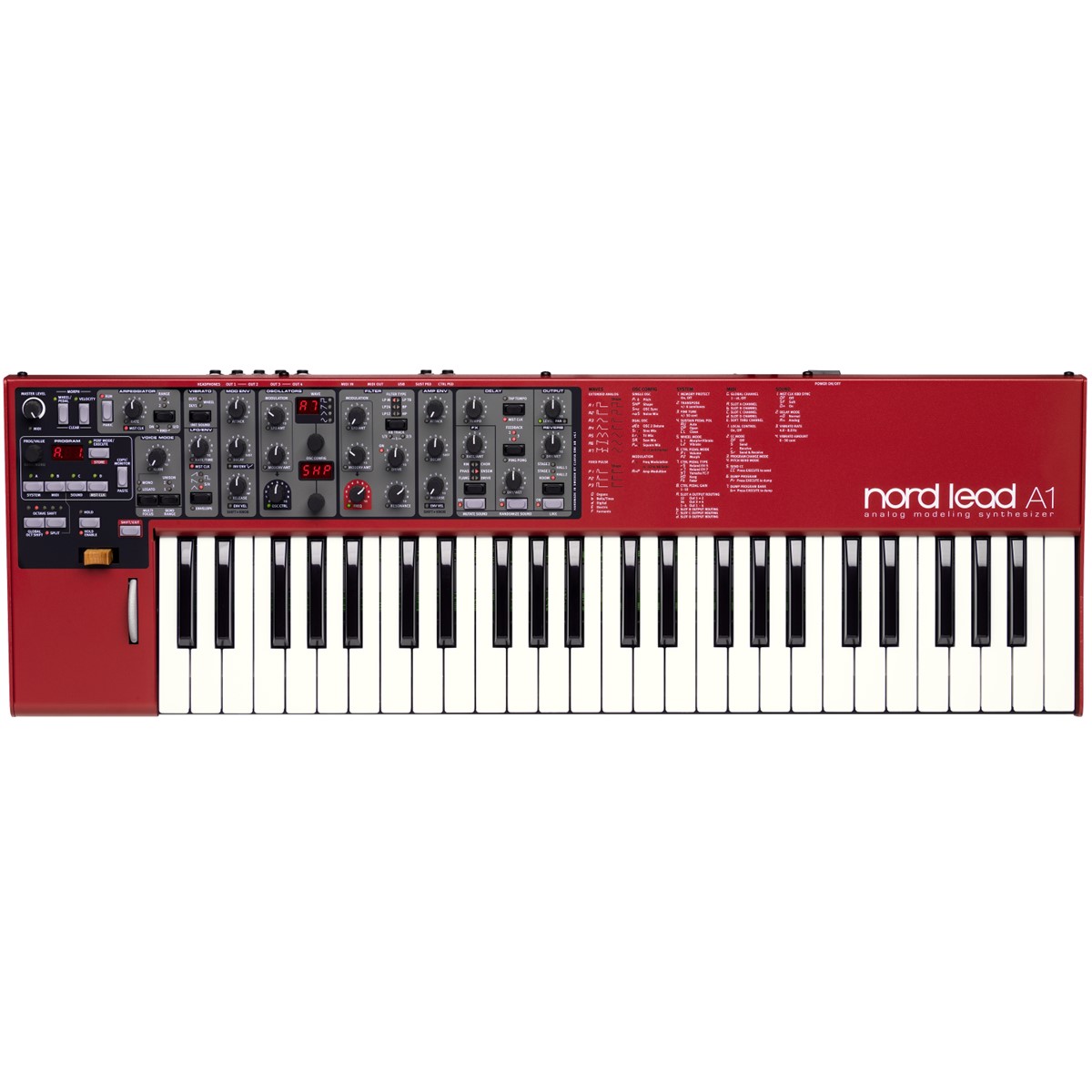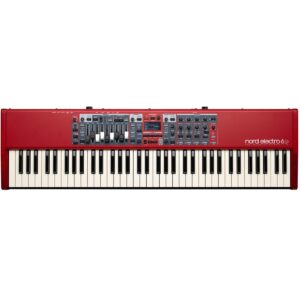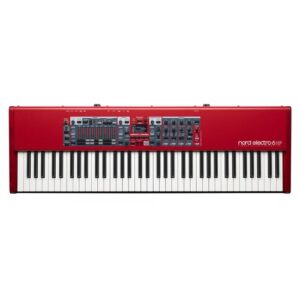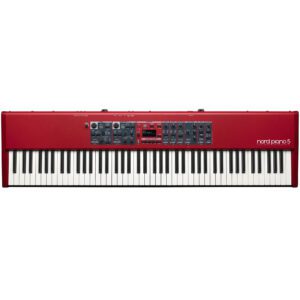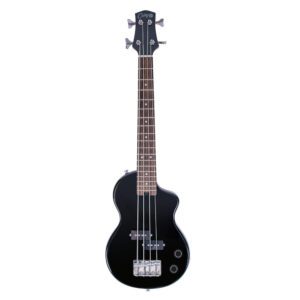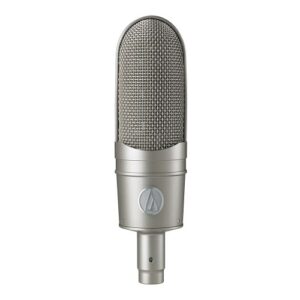
This is the new Nord Lead A1 analog modeling synthesizer – a stunning sounding synthesizer with a simplified yet hugely powerful front panel interface.
Producing stand-out sounds for live or for the studio, the Lead A1 is ideal for all musical genres. Thanks to its carefully thought-out user interface, the Lead A1 encourages experimentation, allows for far speedier programming than would otherwise be possible, and ultimately delivers sensational sonic results.
THE LEAD FOR SPEED
Producing stand-out sounds for live or for the studio, the Lead A1 is ideal for all musical genres. Thanks to its carefully thought-out user interface, the Lead A1 encourages experimentation, allows for far speedier programming than would otherwise be possible, and ultimately delivers sensational sonic results.
MAIN FEATURES
Oscillators
- Unique Oscillator concept
- 8 Oscillator Configurations
- Pitch, Detune, Shape, Sync, AM, Noise, Sub Mix, FM
- Traditional Analog and Digital Waveforms
- Unison
Modulation
- LFO with 5 waveforms
- Mod Envelope
- LFO as additional ModEnv
Filter
- 12, 24 dB low-pass filters
- High-pass and Band-pass filters
- Transistor and diode ladder filter simulations
- of Mini and TB-303
Effects
- Ensemble, Chorus, Phaser, Flanger, Ring Modulator, Drive
Performance
- 4-part multi-timbral
- Master Clock Sync of Arpeggiator, LFO and Delay
- Velocity and Mod Wheel Morph
- USB MIDI
Special features
- Mutator
- Like Button
- Extra Fat Unison mode
OUR BEST-EVER ANALOG MODELING…
At the heart of the Lead A1 is our new analog modeling engine. Taking our virtual analog synthesis to the next level, this modeling recreates a total analog signal path with uncanny realism, and is capable of immense sonic variety. With 26-voice polyphony and four simultaneous synthesizer parts, the Lead A1 is a true synthesizer powerhouse that goes far beyond the current trend for limited capability analog reissues.
…COMBINED WITH OUR MOST INTUITIVE INTERFACE
Fundamental to the design of the Lead A1 is a brand new simple yet sophisticated front panel interface. The design is in fact the result of requests from professional players – even the most experienced programmers – who need to create the perfect sound as quickly as possible for today’s live or studio time demands. The Lead A1 allows easy patch creation and experimentation thanks to a new and unique oscillator section, pre-programmed modulation matrix, and simplified ADR envelopes. Dive in and create incredible patches far quicker than would normally be possible with a synthesizer of such power.
OSCILLATOR SECTION
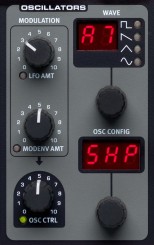 The Lead A1’s new Oscillator section generates 47 different waveforms from classic analog to digital harmonic and inharmonic waves, whilst unique Oscillator Configuration Shortcuts make programming more immediate than ever. Start with a single Oscillator waveform select an Oscillator Configuration Shortcut – Pitch, Detune, Shape, Sync, Sub Mix, FM, AM or Noise – and use the Adjust knob to adjust the settings of the configuration.
The Lead A1’s new Oscillator section generates 47 different waveforms from classic analog to digital harmonic and inharmonic waves, whilst unique Oscillator Configuration Shortcuts make programming more immediate than ever. Start with a single Oscillator waveform select an Oscillator Configuration Shortcut – Pitch, Detune, Shape, Sync, Sub Mix, FM, AM or Noise – and use the Adjust knob to adjust the settings of the configuration.
The end result is high speed programming without the need for the usual complexity of routing and patching, and with the opportunity for ready experimentation. A fast track to stunning sound design for both advanced and less experienced programmers.
Oscillator Configurations
Pitch
– adjusts the pitch of the original oscillator.
DeTune
– adds a second oscillator, with control over its pitch..
Sub Mix
– adds a second oscillator, with a choice of waveform shapes and pitches.
Shape
The shaping of the Analog, Extended Analog and Fixed Pulse waveforms uses a traditional waveshaping method, the other waveforms are changed with a spectral shaping process.
Sync
– emulates Hard sync by adding an additional oscillator that is the sync reference.
FM
Oscillator 1 will be modulated by a sine wave from oscillator 2 at high frequencies. There are several different pitch offsets for oscillator 2 (-12 to +48 semitones).
AM
– uses a second oscillator to create Amplitude Modulation.
Noise
adds a Noise element to the original oscillator, Osc Control sets the mix.

